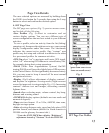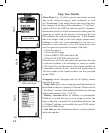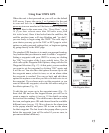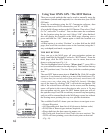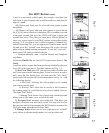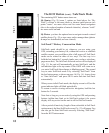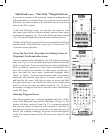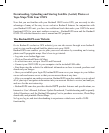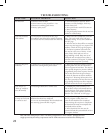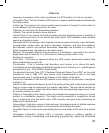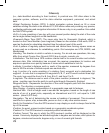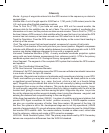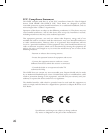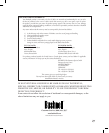
23
•Accuracy: A measure of how close an estimate of a GPS position is to the true location.
•Acquisition Time: The time it takes a GPS receiver to acquire satellite signals and determine
the initial position.
•Active Leg: The segment of a route currently being traveled. A “segment” is that portion of
a route between any two waypoints in the route.
•Altimeter: An instrument for determining elevation.
•Altitude: The current elevation above sea level.
•Atomic Clock: A very precise clock that operates using the elements cesium or rubidium. A
cesium clock has an error of one second per million years. GPS satellites contain multiple
cesium and rubidium clocks.
•Basemap: Built-in basemaps, which typically include coverage of oceans, rivers, and lakes;
principal cities, smaller cities, and towns; interstates, highways, and local thoroughfares;
and railroads, airports, and political boundaries. Basemaps are available in a variety of
global coverage areas, depending on the user’s needs.
•Bearing: The compass direction from a position to a destination, measured to the nearest
degree (also call an azimuth). In a GPS receiver, bearing usually refers to the
direction to a waypoint.
•Cold Start: The power-on sequence where the GPS receiver downloads almanac data
before establishing a position x.
•Coordinates: A set of numbers that describes your location on or above the earth.
Coordinates are typically based on latitude/longitude lines of reference or a global/regional
grid projection (e.g., UTM, MGRS, Maidenhead).
•Coordinated Universal Time (UTC): Replaced Greenwich Mean Time (GMT) as the world
standard for time in 1986. UTC uses atomic clock measurements to add or omit leap
seconds each year to compensate for changes in the rotation of the earth.
•Heads Up Orientation: Fixes the GPS receiver’s map display so the direction of navigation
is always “up.“
•Datum: A math model which depicts a part of the surface of the earth. Latitude and longitude
lines on a paper map are referenced to a specic map datum. The map datum selected on
a GPS receiver needs to match the datum listed on the corresponding paper map in order
for position readings to match.
•Distance: The length (in feet, meters, miles, etc.) between two waypoints or from your current
position to a destination waypoint. This length can be measured in straight-line (rhumb
line) or great-circle (over the earth) terms. GPS normally uses great circle calculations for
distance and desired track.
•Geocaching: A high-tech version of hide-and-seek. Geocachers seek out hidden treasures
utilizing GPS coordinates posted on the Internet by those hiding the cache.
•Geodetic Datum: A math model representing the size and shape of the earth (or a portion
of it).
•Geographic Information System (GIS): A computer system or software capable of
assembling, storing, manipulating, and displaying geographically referenced information
Glossary



